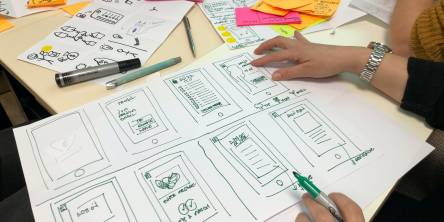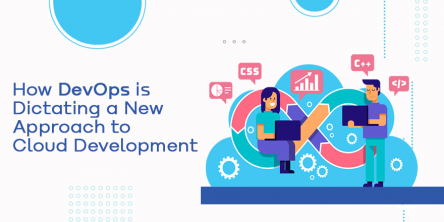Flutter Apps: Development Cost and Other Things You Should Know

Flutter today is becoming popular with numerous companies eager to adopt this technology. The Flutter apps are observing monumental growth ever since it first arrived on the scene. This clamoring for this tool is not without reason though, i.e. it offers plenty of benefits that make it such a great development tool.
Through this article, I’m going to address the queries of app development cost among others. And, do read more about why Flutter is a worthy competitor to other hybrid frameworks, and look at the latest statistics about this technology.
Some of these advantages have been listed below.
- Codesharing: Among the biggest USPs of Flutter is that it allows code sharing, which means a considerable reduction in time spent writing code for different platforms during hybrid development projects.
- High-quality user experience: Flutter includes the Skia 2D library, which is conducive to the use of high-quality graphics in the app. Then there’s the fact that Flutter organizes all elements like widgets, allowing developers to completely adapt the visual aspect of the app.
- Free & Open Source: Flutter technology, because of its free and open-source nature, allows developers to access the documentation easily and helps them to solve the issues with the help of expert developers. In addition to this, the developers also get free access to tons of third-party packages.
Now, if you are considering developing a Flutter app, it is also important to understand how much such a project can cost. Allow us to break down the cost associated with such a development project.
- Discovery phase: A critical point in the project, at this stage one, defines the goals, challenges, etc., and wireframes are prepared. So, you will have at least UI/UX designers, business analysts, and project managers working on the app at this point. This tallies up to five weeks of work and $10,000 in cost.
- UI/UX design: At this stage, designers go from wireframes to mockups, which offer a glimpse of the finished design. Once approved, the team may choose to first develop a prototype to see how one can interact with it. On average, designers spend about 40 hours on this stage, which translates into a cost of roughly $6,000 for this stage.
- Development and testing: This stage generally involves at least a project manager, a handful of developers, and a QA engineer. Considering each participant’s average charges/salaries and the time they are expected to spend on the development project at this stage, you can expect to pay roughly $110,000 for the team’s services.
It is not enough to simply know the cost; it is equally important to also consider the different factors that can affect the development cost.
- App features: Some businesses need a single-page app, while others need complicated hybrid offerings with avant-garde features and functionalities. The more the number of features and how advanced these features are, the Flutter app development cost for a company can rise rather quickly.
- Server cost: A modern app tends to generate an abundance of data that is rather precious to the company offering said app. But where will all that data go? In servers, of course, which brings us to the next factor that adds to the development cost of a Flutter app.
- Support and maintenance: To ensure the app can keep up with demands, remain trendy, address any issues, etc., it is important to ensure that the app is regularly updated. Such periodic maintenance can add to the development costs.
The goal of such a breakdown of the development cost is to demonstrate the high value a Flutter app brings to the table as compared to its cost. Plus, it also makes decision-making easier for companies. Now that you understand the costs, the next ought to be starting the search for an expert vendor for Flutter app development services.
Similar Articles
Mobiles and by extension, mobile apps are the basis for the modern mobile device and take it beyond a mere communication tool. In today’s world, information has to be available at our fingertips and people want mobile applications to do instantly what websites used to do before, give information and details instantly, anytime & anywhere
In the ever-evolving landscape of app development, embracing innovation is not just a choice but a necessity. Enter serverless architecture, a transformative paradigm reshaping how we approach app development.
EdTech developers leverage modern technology to create immersive and engaging learning apps. A successful product relies on solid technology, including front-end frameworks like React.js, offering efficient development and incorporating cutting-edge features like gamification and voice recognition for a standout user experience in the education industry
Internet of Things, or IoT, is a fast-growing concept that promises a transformation in how we live and work. It enables us to connect and control smart devices such as wearables, medical devices, sensors & more using mobile apps. IoT has impacted many aspects of our lives, and some of the most notable are home building, logistics, healthcare, and more.
Mobile app development has become an essential part of the digital ecosystem as mobile devices have become more prevalent than desktops or laptops. Regarding mobile app development, two popular approaches are Xamarin and native mobile app development.
With React Native becoming one of the preferred tools for developing mobile and web apps, there has been a growing focus on outsourcing software development based on this language
With over 6.3 billion estimated smartphone users worldwide, mobile app usage is growing exponentially. Studies have shown that Americans check their phones 262 times daily, once every 5.5 minutes! People check their phones at home, at work, on the street, while eating, in bed, and cars.
With the number of companies embracing digital solutions growing continuously, there is also an increasing demand for cloud services. Cloud development services help businesses (small or big) take advantage of digital transformation and to move their infrastructures to the cloud.
Businesses nowadays are fully enmeshed in the outstaffing and outsourcing trend. In order to boost production and take advantage of the expertise of specialized experts, it is safe to assume that modern professionals are more reliant on outsourcing









